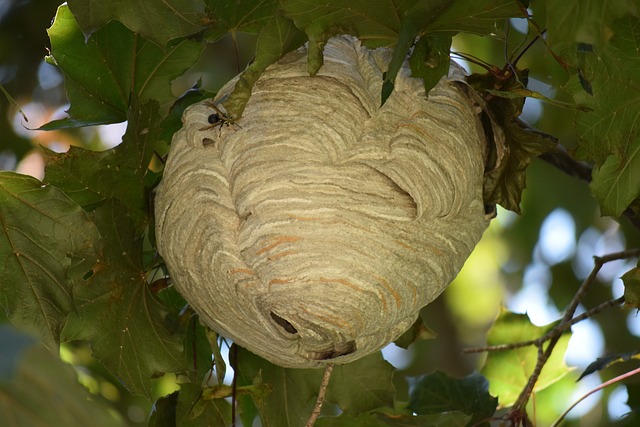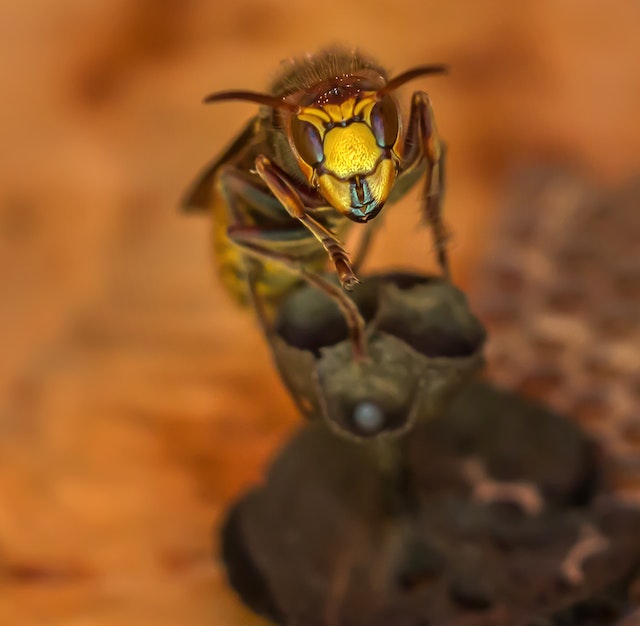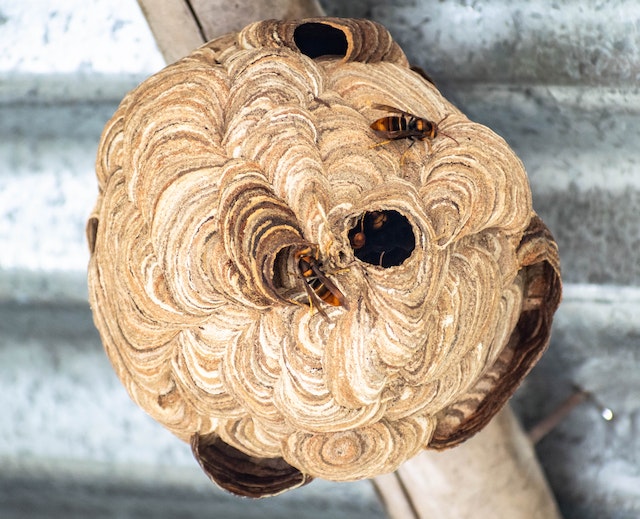Wasps are significant problems in any homeowner’s yard. Because of their aggressive tendencies, these pests can cause problems during outdoor relaxation or summer barbeque.
Did you know that some types of wasps have slightly different temperaments, with yellow jackets and hornets being more aggressive than mud daubers and paper wasps?
Identifying a hornet hive from other wasp nests can help you determine the type of pest on your property and make a difference in the pest control options you consider.
Keep reading to learn more about wasp hive identifications and when you should contact a pest agency like United States Pest Services for your wasp pest control problems!
Hornets vs. Wasps
So, what’s the real difference between a hornet and a wasp? Surprisingly, not much.
All hornets and yellowjackets are wasps. Despite their different designations and appearances, they are all the same type of insect. However, this doesn’t mean that hornets and other wasp species are the same.
Some hornets can grow around 1 to 2 inches long. Image seeing a pest that big!
In comparison, most wasps only range in size from ⅜ of an inch to an inch long, but most species are smaller than an inch.
In the United States, there’s only one true hornet. Some yellow jacket species, like the bald-faced hornet, and hunting wasps, like the tarantula hawk, are commonly mistaken for hornets, but these pests aren’t actually hornets.
The European hornet is an invasive species that migrated to North America in the mid-1800s from overseas ships. Since then, they’ve established themselves across the east coast of the United States.
Unfortunately, these pests have created a comfortable foothold in New York State. These large yellow, brown, and red wasps are aggressive too, especially during the late summer and fall months.
Because of their larger size and different coloration, you can easily tell a European hornet apart from a yellow jacket or brown paper wasp. Still, you may have more trouble if you can only find a hive on your property.
If you can’t catch a good glance at the pest populating your yard, look at these nest identification tips that may lend a hand.
Identifying a European Hornet Hive
Many wasp hives may look similar at first glance, but you can usually discern a hornet hive from other wasps that may populate your yard.
Hornet Hive Appearance
European hornets typically build their wood pulp-based homes inside hollow trees, with their hive often hidden by the tree’s exterior. If you hear buzzing noises after passing foliage on your lawn, a nest may be located within!
These hives are usually light gray, mimicking the appearance of the wood they use to create their nests. The nests are extensive to accommodate the size of the hornets and resemble large, paper mache teardrops.
Hundreds of workers and eggs live inside a honeycomb-like structure, with most hives having over 1,500 to 3,000 cells inside. European hornet nests usually have fewer insects than an average yellow jacket hive, but immense hives can house around 1,000 workers at once.
European Hornets vs. Other Wasps
Yellow jackets tend to build intricate tunnels underground, using chewed tree pulp to create cells hosting the workers, eggs, and queen. While yellow jackets can build anywhere aboveground, you’re more likely to see these pests disappearing into their underground burrows.

Above-ground hives may look similar to European hornet nests, but the location of the wasps could provide a clue as to which insect is terrorizing your yard.
Hornets prefer to keep their nests in protected areas and will build in secluded places, unlike some yellow jacket species and paper wasps. Any free-hanging nests aren’t likely to result from a hornet infestation.
Here’s a list of potential places a European hornet hive may crop up on your property:
- Attics
- Barns
- Wall voids
- Under porches
- Inside hollow trees
Plus, European hornets may set up shop in any infrequently used outdoor structure like sheds, pool rooms, or old cars. European hornets could also build their home in your garage or inside walls.
While paper wasps craft hives from the same materials as hornets and yellow jackets, their nests may look different. Paper wasp hives curve downwards with their cells usually exposed.
Paper wasps build an umbrella-like structure that either develops into a traditional wasp hive shape or retains its unique design. These pests will similarly live in locations around your yard or home, but you’re more likely to see these pests out in the open.
Other wasps, like mud daubers or cicada killers, create small solitary nests that only contain them and their young, so you don’t have to worry about mixing these hunting wasps up with European hornets that may patrol your yard.
European Hornet Hive Removal
So, should you attempt at-home removal methods if you’ve found a hive on your property?
Tampering with a wasp hive is never a good idea, no matter the species. United States Pest Control doesn’t recommend DIY removal methods for wasp problems on your property.

Because of their aggressive nature and extremely territorial behavior, yellow jackets, paper wasps, and hornets will quickly exit their hive at the first sign of danger to attack any nearby threat.
Wasps can sting multiple times in a row, and some species will even chase predators away for many yards, delivering painful stings with each step! To keep yourself and your family safe, we suggest you contact reputable pest control agency to take care of the problem.
Here at United States Pest Control, we can safely eliminate any wasp on your property, whether you’re dealing with underground yellow jackets or an aboveground hornet hive.
Don’t hesitate to call us whenever you see these pests buzzing around!

